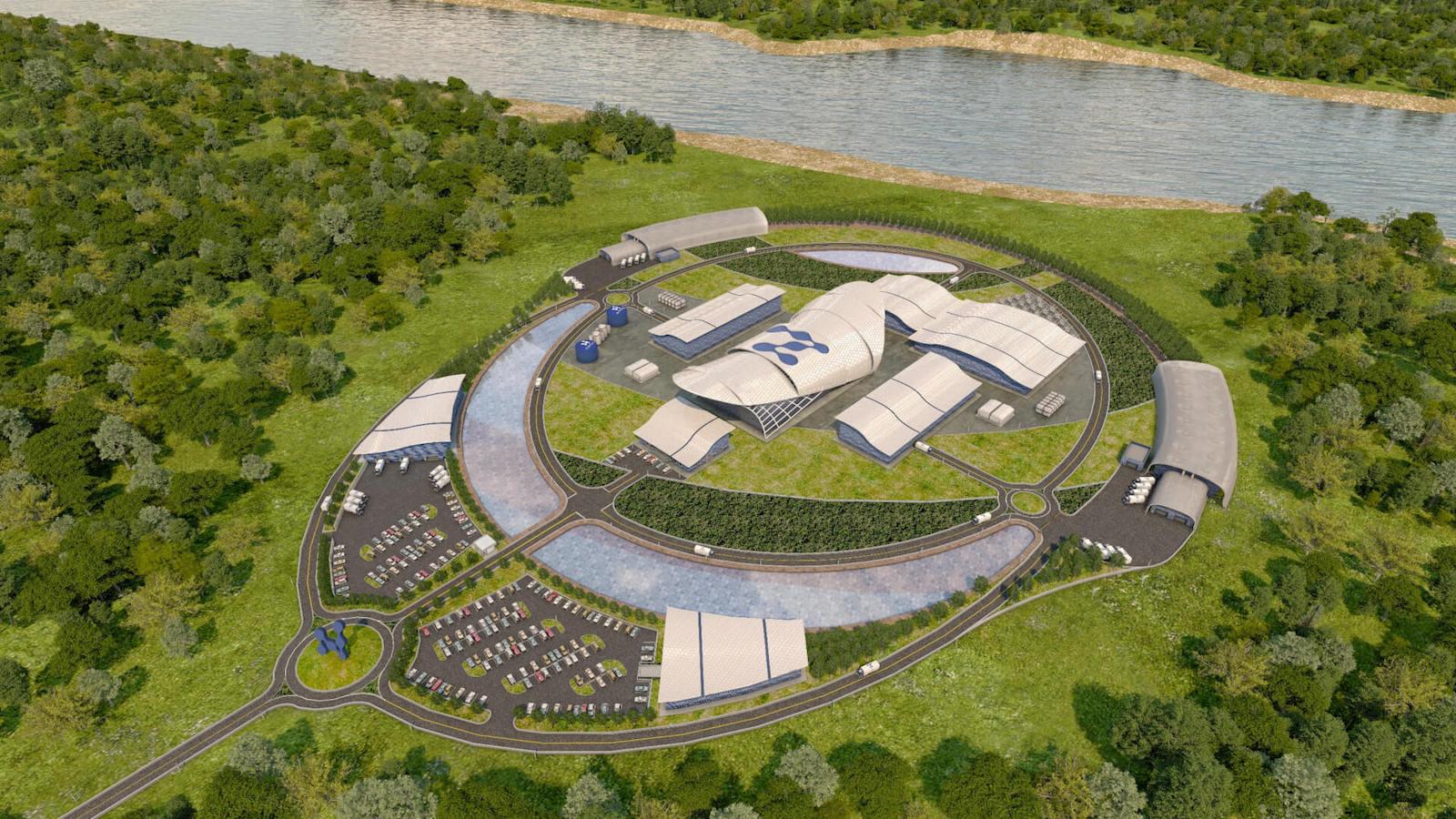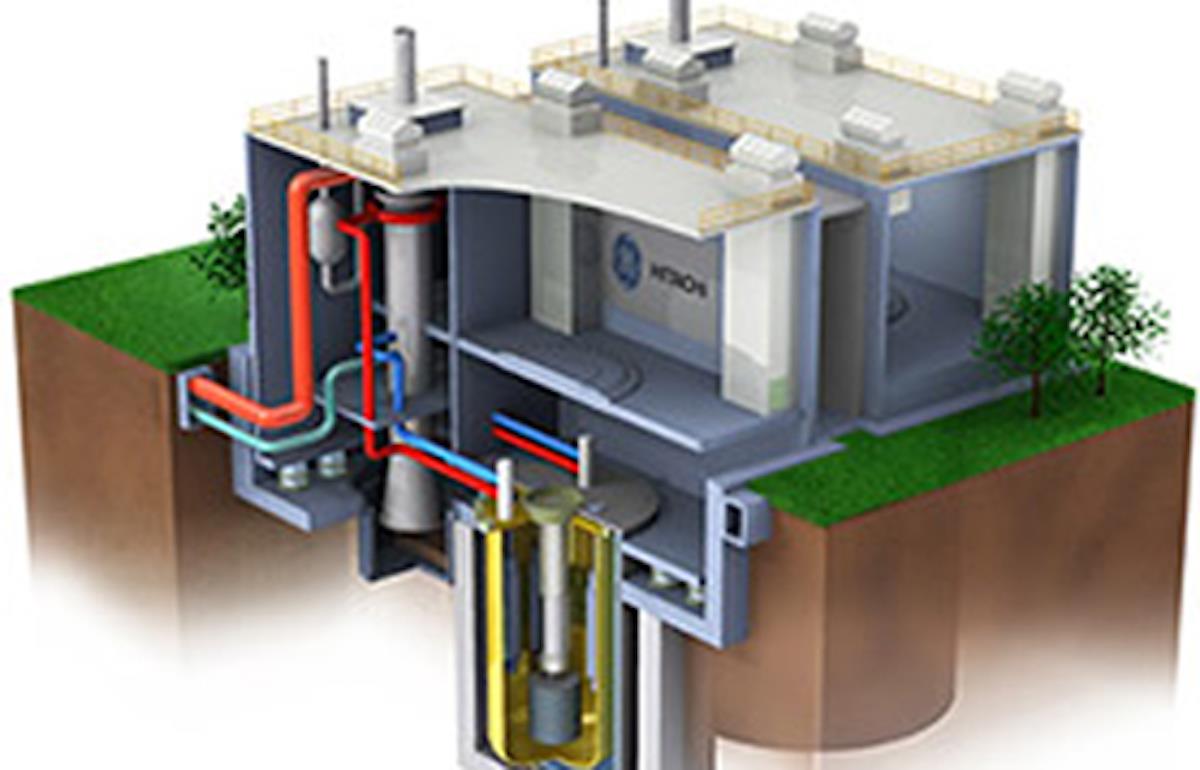
Small mod nuke reactors fuel new waste debate
(MENAFN- Asia Times) TOKYO – There's an argument that with all the interest in ''advanced'' nuclear reactors as a reliable 24/7 replacement for coal and oil-fired electrical power generation, enthusiasts are overlooking the elephant in the room.
They don''t talk much about the nuclear waste with a close-to-forever radioactive half-life that must, somehow, be stored safely for centuries – even though prospective warehousers anywhere in the world who are willing and able to keep the stuff in their backyards are scarce as the proverbial hen's teeth.
This reluctance to focus extends in some cases to a certain evasive dancing around as investors jump into the new nuclear technology. Take industrial machinery maker IHI (Ishikawajima-Harima Heavy Industries), which has announced it will become the second Japanese company to invest in NuScale Power, the US designer of small modular nuclear reactors. The first – as reported by Asia Times – was engineering company JGC.
Small modular reactorsJGC will provide engineering, procurement and construction services for small modular reactors in cooperation with its long-standing American partner, Fluor Corporation, which is NuScale's majority shareholder. IHI will provide containment structures for reactor cores and other components.

An artist's conception of a NuScale nuclear power plant built by combining small modular reactors. Photo: Fluor Corporation
IHI's decision to invest in NuScale should raise awareness of SMRs as a complement to solar, wind and other renewable energy sources that, by themselves, cannot be relied upon to supply an electric power grid's baseload.
But this leaves one important question unanswered: What about the radioactive waste?
NuScale's website tells us:
In short, nuclear waste treatment and disposal are not part of NuScale's business plan.
But one company that does address the issue is GE Hitachi Nuclear Energy (GEH), a joint venture established by GE (General Electric) and Japanese industrial conglomerate Hitachi Ltd in 2007. Combining GE's design and Hitachi's modular construction capabilities, GEH supplies nuclear reactors, fuel and related services.
Boiling water SMRGEH's nuclear reactor models include the BWRX-300, a 300MW boiling water SMR; and PRISM, a sodium-cooled SMR that comes in 165MW, 311MW or 380MW models. Both employ passive safety features and are relatively cheap to build.
The BWRX-300 is designed to provide flexible baseload electric power at prices competitive with those of natural gas combined-cycle plants. On a per-MW basis, it is cheaper to build than conventional nuclear power plants.
As previously reported, GEH and Fermi Energia have agreed to pursue the deployment of a BWRX-300 in Estonia. With 200 coal-fired boilers to replace, Poland is also looking into the technology, as are the Czech Republic, the United States and Canada. GEH management believes the first commercial BWRX-300 could be put into operation by 2028.
But, again, quit beating around the bush. What about the BWRX-300 and nuclear waste?
PRISM sodium-cooled SMRCut to the chase: We''ll talk about not the BWRX-300 but GEH's PRISM reactor model (by the way, it ''can produce up to 100x more power per unit of fuel, compared to conventional reactors''), which aims at solving the nuclear waste problem, and not only for SMRs. According to the GEH website,
PRISM is a high-energy neutron (fast) reactor which uses a series of proven, safe and mature technologies to create an innovative solution to dispose of used nuclear fuel and surplus plutonium.
PRISM can recycle used nuclear fuel, generating electricity while reducing radiotoxicity from hundreds of thousands of years to hundreds of years, thereby reducing the footprint/cost of the geological repository.
In GEH's view, what is generally considered to be ''nuclear waste'' these days is not really waste at all. Light water reactor (LWR) used nuclear fuel is composed of 95 percent uranium, 1 percent transuranics, and 4 percent fission products. Many of these transuranic isotopes have long half-lives, which can create long-term engineering challenges for geologic disposal.
By using electro-metallurgical separations, PRISM is designed to perform the recycling of the 96 percent of the fissionable material (uranium and transuranics) remaining in used nuclear fuel.

PRISM reactor. Image: Wikilpedia Natrium molten sodium reactor
GEH is also working with TerraPower, the nuclear reactor design company founded by Bill Gates, to develop Natrium technology, which combines a molten sodium reactor with a molten salt energy storage system. Natrium is Latin for Sodium.
According to TerraPower, this combination is both four times more fuel-efficient than conventional light water reactors and can:
integrate seamlessly into power grids with high penetrations of renewables. The molten salt-based storage technology is adopted from and has been widely demonstrated around the world in the concentrated solar power industry. The Natrium technology's reactor creates heat that can be used to generate electricity immediately or be contained in thermal storage reserves. That heat can be turned into electricity upon demand from the grid when need peaks or renewables are unavailable.
In October 2020, it was announced that:
TerraPower has been selected by the US Department of Energy (DOE) to demonstrate the Natrium 
reactor and energy system with its technology co-developer GE Hitachi Nuclear Energy (GEH) and engineering and construction partner Bechtel. The award brings public and private interests together through the Advanced Reactor Demonstration Program (ARDP), which will provide $160 million for initial funding to build two reactors that can be operational within the next five to seven years.
On June 2 of this year, this project took a big step forward when it was announced that TerraPower, the State of Wyoming and Rocky Mountain Power (a division of PacifiCorp) plan to build a Natrium reactor on the site of a coal-fired power plant that is being taken out of service.

Microsoft co-founder Bill Gates is pictured in a meeting at the Ministry of Commerce of China in Beijing, China, December 8, 2011. Gates, who had largely funded TerraPower, said he was in talks with China to develop a reactor that would be very low cost, very safe and generate very little waste. Gates said TerraPower was developing a fourth-generation nuclear reactor that would run on depleted uranium. Photo: AFP / Guoji Shangbao / Imaginechina
According to the Terra Power press release,
The demonstration project will be a fully functioning power plant and is intended to validate the design, construction and operational features of the Natrium technology. The location of the Natrium demonstration plant is expected to be announced by the end of 2021.
The project features a 345 MW sodium-cooled fast reactor with a molten salt-based energy storage system. The storage technology can boost the system's output to 500 MW of power for more than five and a half hours when needed, which is equivalent to the energy required to power around 400,000 homes.
This is significant in a state with a population of less than 600,000. Even standard operation at 345 MW could power about 250,000 homes.
TerraPower CEO Chris Levesque told the press that the plant would produce one-third the volume of nuclear waste compared with conventional nuclear plants.
Concerned scientistsThe Union of Concerned Scientists does not agree. Citing its own report entitled ''''Advanced'' Isn''t Always Better,'' which was published in March, UCS wrote:
One of the proposed sodium-cooled fast reactors, TerraPower's 345 megawatt Natrium, has received considerable media attention recently because TerraPower founder Bill Gates has been citing it during interviews about his new book, How to Avoid a Climate Disaster. In mid-February, Gates told 60 Minutes correspondent Anderson Cooper that the Natrium reactor will produce less nuclear waste and be safer than a conventional light-water reactor.
In fact, according to the UCS report, sodium-cooled fast reactors such as the Natrium would likely be less ''uranium-efficient.'' They would not reduce the amount of waste that requires long-term isolation in a geologic repository. They also could experience safety problems that are not an issue for light-water reactors. Sodium coolant, for example, can burn when exposed to air or water, and a sodium-cooled fast reactor could experience uncontrollable power increases that result in rapid core melting.
A vigorous debate – or a knock-down, drag-out political fight – is in the making. According to Terrapower, ''Next steps include further project evaluation, education and outreach, and state and federal regulatory approvals prior to acquisition of a Natrium facility.''
It is not clear how long convincing the public and obtaining regulatory approval might take, but the ARDP's target of building an operational plant within five to seven years suggests a time-frame similar to that of the BRWX-300.
According to an email from Hitachi-GE Nuclear Energy (GEH's counterpart in Japan), no insurmountable technical issues are foreseen for either type of reactor, but given the time required for feasibility studies, demonstration projects and licensing approvals, a BWRX-300 plant might not be built in Japan until the 2030s and building a PRISM plant in Japan might not be possible until the 2040s.
According to Hitachi Ltd, ''construction of new nuclear power plants in Japan is unlikely to be realized for a while. For the time being, our nuclear business is focusing to promote the decommissioning of Fukushima Daiichi Nuclear Power Plant'' – which, of course, was the site of the 2011 triple disaster of earthquake, tsunami and meltdown.
New SMR technology will probably need to be demonstrated in North America and Europe before it is deployed in Japan.
Meanwhile, hang onto those sci-fi schemes to stuff the nuclear waste down toward Jules Verne's center of the earth, and store it in geological formations, or shoot it into space as if it were Jeff Bezos.
Scott Foster is an analyst with Lightstream Research, Tokyo.

Legal Disclaimer:
MENAFN provides the
information “as is” without warranty of any kind. We do not accept
any responsibility or liability for the accuracy, content, images,
videos, licenses, completeness, legality, or reliability of the information
contained in this article. If you have any complaints or copyright
issues related to this article, kindly contact the provider above.


















Comments
No comment